Pyotr Vladimirovich Mozharov

Pyotr Vladimirovich Mozharov
This page is to look closer and to the memory of Pyotr Vladimirovich Mozharov, a keen and avid motorcyclist and a brilliant engineer. Mozharov actually became the organizer of serial motorcycle production in the USSR and is referred to as the founder and father of the Soviet motorcycle industry.
He was born in 1888, in Tambov Oblast, Russia, in the village of Sayukina, about 480 kilometers south-southeast of Moscow. (Birth dates vary, 7 or 20 September 1888). His father worked as a manager of the alcohol and woodworking plants for his wealthy brother Ivan Petrovich, who owned factories, houses, shops, even a locomotive.

Year 1900, Pyotr, 12 years old, father Vladimir Mozharov and mother Anna S. (standing), uncle Ivan (sitting) and his wife on the right.
He received a classical education for the time. Since childhood he learnt the techniques to drive a car and had an interest in photography. At the expense of his uncle after high school in 1910 he traveled to further study in Germany, Thermal Technology at the Faculty of Engineering at the University of Leipzig. He lived in Chemnitz (which was later named Karl-Marx-Stadt from 1953 to 1990), 85 km from Leipzig. As he did not lack funds he rode a motorcycle, drove cars, then he learnt to fly an aeroplane. He tried 27 motorcycle brands and in four years traveled 60,000 km, He returned to Tambov province in 1914, where he was drafted into the army, served, even was a prisoner. He was fond of any kind of construction machinery and with his cousins eventually built an airplane, even flew with passengers over the Tambov region which made him more famous than Tambov itself. This was in 1914!
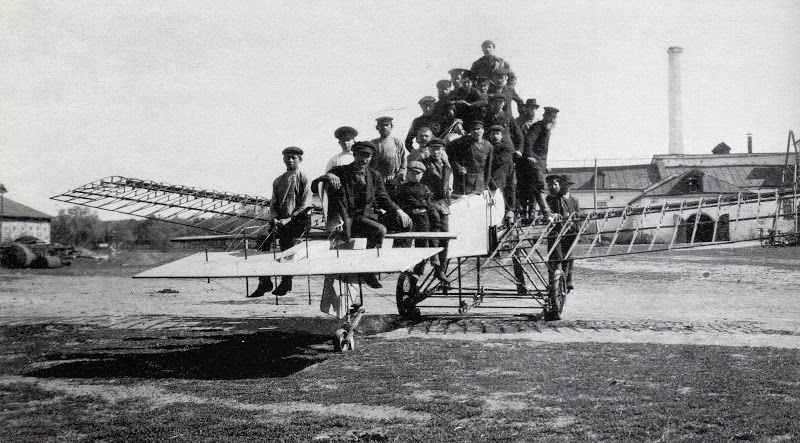
Mozharov’s plane design. He is pictured at the top, testing the apparatus for strength.
He became the chief mechanic at the Tambov Powder Factory. In 1916, aged 28, he married Ksenia Nicholas (1895-1917). Life was getting better. That year he applied all his talent and engineering education with great success at the factory, and essentially he recreated it. He took an active part in the design of mechanical equipment and instructed the construction and equipping of the necessary technological equipment and production buildings, calculated on a daily production target of more than 32 tons of explosives. He had to direct everything, the installation of boilers, steam and water pipes, water purifier and nourishing plant, coal feed conveyor, oven, furnaces, and more. He did this with great enthusiasm, his proposed solutions were so advanced that on their fundamental part Mozharov received patent № 3091. At the gunpowder factory he achieved and experienced himself in different roles: designer, section chief, chief mechanic of the whole enterprise.
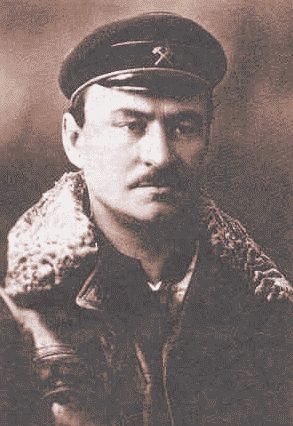
Designer/Engineer Pyotr Vladimirovich Mozharov.
Then the chaos of the 1917 revolutions struck. There were frequent protests, mutinies, and many strikes. Family estates that had existed for years were looted and burned. Movharov’s first wife died. Nevertheless, it seems he accepted the terms of the coup revolution but he decided in a change of work and place of residence. When he moved from Tambov to Izhevsk the workers united to organize a farewell meeting and to present him a gift and a letter with hundreds of signatures to express their sincerity and devotion. He was a connoisseur of engineering theory and he was also a first-class practitioner, and did not shy away from rough hours of work on the machines himself. In 1924 he moved with his family (married second wife Varvaroj (1897-1983) and two year old son Boris) to the izhevsk factory which had already grown from the working settlement in the city of Izhevsk in the Udmurt Republic, situated along the Izh River in the western Urals.
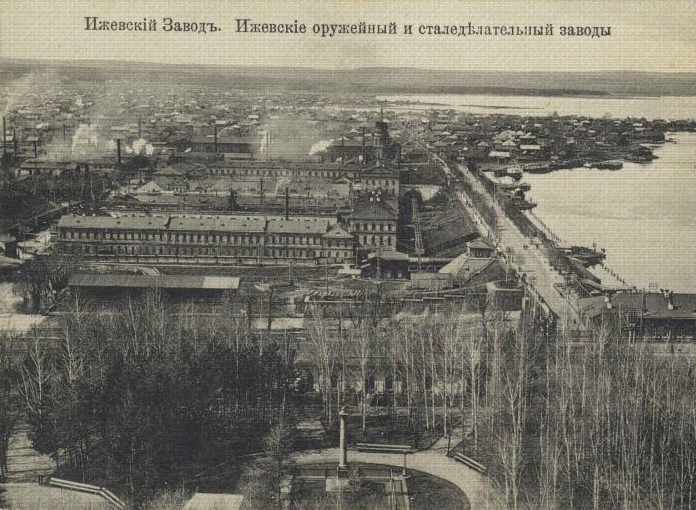
Old Izhevsk
Huge, Izhstalzavod with a history of military-industrial production, had become the new place of work for P.V. Mozharov and the family lived in “engineering barrack № 22″. He was a kind, fun, powerfully built man, very fit, doing weights and enjoyed wrestling. Instead of dogs he kept a tame wolf. The passion for technical innovations continued, such as the 1926 built airboat, and the winter-snowmobile. His main hobby, he bought and restored an old AJS (aka Stevens) motorcycle, which he would ride to work, or just ride around town, frightening grandmas and accompanied by a crowd of local boys.

Snowmobile ВОТОАВИОХИМ created by P.V.Mozharovym in Izhevsk. The second at the left – P.V.Mozharov
At Izhevsk the desire for new management role and knowledge skills saw Pyotr Vladimirovich plan new products and goods at the factory. Initially he thought of bicycles, but Mozharov proposed motorcycles, along with weapons manufacture. At that time, in Russia, even in the whole empire, there were only a few moto makers, notably Alexander Leutner & Co. in Riga, Latvia, in Moscow Yuri A. Meller’s factory “Dux”, and Pyotr Frese’s factory in St. Petersberg along with many many smaller enterprises. Motorcycle production lagged well behind numerous factories in Germany, Great Britain, France and the USA.
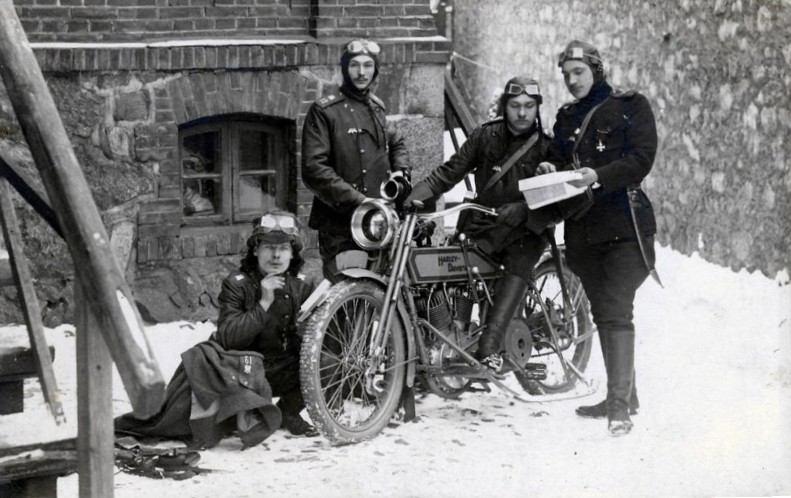
Motorcycles were needed, especially during World War 1. Here the first Russian bikers, on Harley-Davidsons and Indians.
Mozharov received a diploma in Germany, he considered the country a motorcycle mecca and the center of the best design ideas. He was considered one of the few experts on the motorcycle at that time. He had been on a mission in Germany, and returned convinced that the Soviet Union should build customized copies of German motorcycles, especially from October to December 1927 when he and colleague G.I. Adamovich visited 23 motorcycle factories. They bought back a lot of details, engines, machines, and other important documentation and information. His biographer Kurikhin O. wrote: “Pyotr visited eight well-equipped motorcycle factories: Allright, BMW, DKW, D-Rad, Mabeco, Neander, NSU, Zundapp. 15 other he referred to as “other” because motorcycle production was limited to them … ”
The strongest impression on Mozharov were three firms: DKW, Zundapp and Neander. First, thanks to mass and variety of products, both basic – motorcycles and more, outboard motors, motors, generators, etc. Second-for perfection of technical solutions. And third, for the interesting design solutions and direct participation of its leader Ernst Neander in the creative process – design and testing, which very impressed P.V. Mozharov …
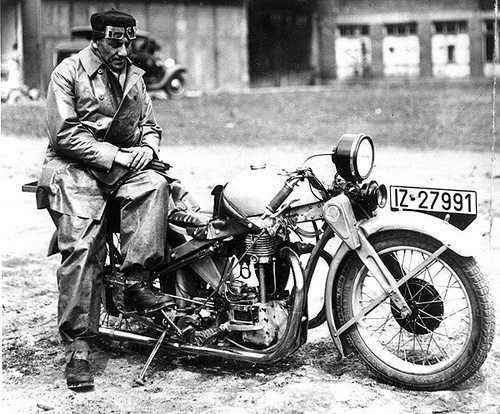
Ernst Neumann-Neander with his motorcycle (Cologne, Germany)
Ernst Neumann-Neander had a great influence on Mozharov, which he trained. As a result, in 1928, the new-born “Motorcycle Section” at Izhstalzavod was established and marked the beginning of Soviet motoprom (motorcycle industry). 1928-1929 saw further complex theoretical work accomplished on the project, although the engine was supposed to be a bought German 750cc Wanderer. In August 1928 Mozharov participated in the motocross Moscow – Tblisi – Moscow on a Neander along with a dozen other makes from British and American brands, to find which sample was best to follow. Moscow had already declared “… already designed the Soviet motorcycle, suitable for driving on our roads. Now the Izhevsk plant has started assembling these machines and will be ready to release the first three prototypes that we are likely to give for the next motocross, and then will begin their mass production … “, however, the results of analyzing the path Pyotr realized that he could not deliver on time the “Soviet build-purpose bike for all occasions” (given the deplorable condition of roads, lack of service and other realities of the time). He received permission to proceed to further work on three projects, including – a heavy bike with an engine of 1200cc, a transverse V-twin, and a 4-seater sidecar. It was designated Izh-1; the second machine, Izh-2, again a 1200cc was designed with forced cooling of the engine and sidecar wheel drive! The third motorcycle with a motor from Wanderer, was named Izh-3. In early 1929 Mozharov appointed 9 engineers to work under him as the head of the Motorcycle Section. He decided to do the medium and light motorcycles, particularly in January 1929 plans for an Izh-4 engine with 200 cc – and for planning an Izh-5, and already quite an emergency pace Motorcycle Section trying to create a sample Izh-6.
Mozharov visited German factories again in the Spring of 1929, to assess the latest in the world’s motorcycle industry, He worked for a month at BMW, he offered 17 comments on motorcycles, especially on BMW R-16 and its sidecar (the body and suspension with two semi-elliptic leaf springs). By Spring 1929, in the workshops the best craftsmen brought up on traditions of gunsmithing, started to mould tin, steel and motors a whole flock of Izhies (so named for the Izh River). On 17 September 1929 the Izh-1 rolled out of the factory gates. The structurally independent machine was created in just 8 months. The motorcycle world stamped approval on the “Mozharovskaya” frame. The frame featured another innovation: thru-the-frame exhausts.
Pyotr had quite an artistic ability to create a complete image of the machine. Two months he could sit at a blank drawing board, thinking, sometimes writing something in a tiny booklet. Then a day or two later he gave an elegant, polished drawing showing the entire layout of the design! A generous man of talent, he acted as a sculptor, creating not just a single figure, but a whole series of works. They allow you to get used to the image of the sculptor, fully feel its features, select and develop the most successful solutions. And the engineer “sculpted” as many as five different machines, in sketches outlining the sixth. For the first two Mozharov laid the possibility of mounting and coupling with a machine gun. Izh prepared to rush to the factory conveyors and motorways, to bring new glory to the capital of Udmurtia. And in September 1929 the first serial Izh-1 participated in the long All-Union test run from Izhevsk (first on the boat) to Nizhny Novgorod, and then further progressed – Moscow-Leningrad – Pskov – Bryansk – further to Kharkiv, and back to Moscow; total 3,300 km!
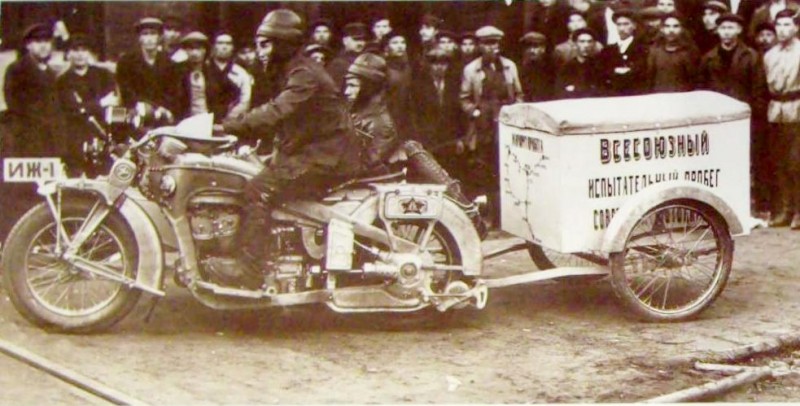
The Izh-1 with sidecar and trailer “on the road”, driving Joseph Shadrin, 1929.
Mozharov learns about the decision of the State Commission to collapse motorcycle production at Izhevsk. They concluded that it would take a long time to build new facilities and equipment at Izh and they decided to send Mozharov to Leningrad for everything related to motorcycle production to the existing plant on the banks of the Neva. The family relocated there in January 1930.
“Again from scratch, again all over again”, did not hinder Mozharov. His team of engineers and all development is transferred under the wing of the Mass Production of the Trust (or TREMASS as it was fashionable to phrase), it was not known whose decision, but the trust did not know how to start a business. In Spring 1930 Mozharov went again to Germany, to study light motorcycles in particular the DKW mass-model “Luxus-300″.
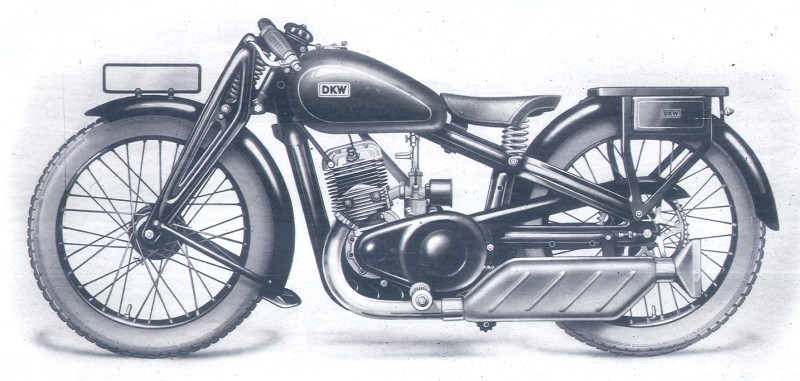
1930 German DKW “Luxus-300″.
Back in Leningrad, under Mozharov’s direction created a sample Tremass-300, it’s prototype was the DKW Luxus-300, primarily due to its mass production, 50,000 pieces per year. Its reliability and ease of use was sufficient.
The constructor group worked to adapt the DKW Luxus-300 to Russian conditions. Road tests were conducted that Summer with great success. At an exhibition of Soviet motoprom were presented Tremass-300, and all available models Izhey, it was visited by about 10,000 people! The irrepressible Pyotr Vladimirovich managed in 1930 to become Chairman of the new technical commission of motocross Leningrad-Moscow – via Ukraine (Kiev, Kharkov)-Bryansk-Pskov-Leningrad, during the run the motorcycle exhibited strengths – good acceleration, relatively small fuel consumption, but concerns about the insufficient quality of the materials (rapid wear on the cylinders, chains) were often denied. Mozharov identified more than 30 comments that noted however Leningraders achieved best value “high quality at low cost.”
After the necessary improvements in January 1931, mass production commenced of the L-300 (Leningrad) and 1939 at the “Red Oktobr” factory. In July 1931 at the 3rd All-Union Soviet motorcycle run compared motorcycle models, Tremass-300 with three Л-300 (L-300). Л-300 were the best. A year later, a book was published P.V. Mozharov “Soviet motorcycle Л-300″, in which there are these words: “The machine Л-300-300, motorcycle light type, the most necessary and in the public service, and for individual use in the USSR. This model is the most economical, because at the lowest cost provides the best results …
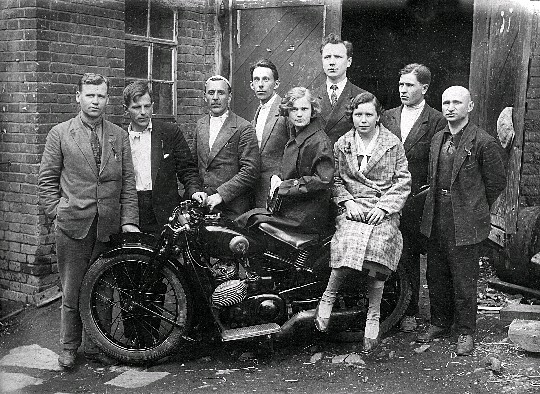
Leningrad engineers with Л-300 (L-300) (right-Mozharov? Without a mustache?)
It was decided to learn for the production of the Л-300 (L-300) for other plants, Izhevsk, young professionals came from the Moscow Institute of Mechanics, Nizhny Novgorod automobile college graduates, engineers from the Leningrad factory “Red October”, taking Senior Motorcycle Plant all necessary technical documentation to the L-300. As they say, sowed the seed, and left a good foundation with students and colleagues, and at the same time the gift of Izhstalzavod was not lost, but continued business and already without Mozharov.
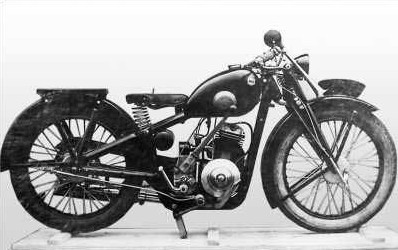
(L-300) Izh-7
Izhevsk designers were accustomed to the exact performance specifications, but found in Leningrad a lot of mistakes and inconsistencies. They had to undertake a thorough reworking of all documentation, resulting in substantial changes to it.The result was a drawing for a new model of motorcycle, designated IZh-7. This work was done so quickly that in the same year, 1933, managed to build 12 motorcycles (in 1934 – 111 pieces, in 1935 – 451, 1938 – 4,840 pieces. Work led Moscow Mechanical Institute graduate V.V. Rogozhin, who soon became chief designer and chief technologist temporarily.

Assembly of motorcycles IZH-7 in the shops (1933-1940)
The army in the Soviet Union required a good motorcycle choice for the needs of the Red Army. At the Economic Council of the autumn of 1931. plans to produce heavy and medium motorcycles were laid down. To entrust the design and launch of production of military motorcycles products now? Magic wand, already known, P.V.Mozharov engineer, with his colleagues and students, who else?
In Moscow in February 1932, NATI (Autotractor Scientific Institute) invited all, seriously, invited all old, experienced staff, and recruited talented young enthusiasts; the head of moto NATI new laboratory became urgently recalled from Leningrad – P.V. Mozharov. The organizational skills of Mozharov, his ability to create a team of like-minded people genuinely united! Many of his associates, colleagues, students became well-known engineers, designers of “Mozharovskaya” groups such N.N. Artamonov who later became chief of Bureau liquid-jet engines, after the war was S.I. Karzinkin – Motoveloprom, Predsovmina USSR was the organizer of the postwar motoproizvodstva, A.M. Fedorov, S.N. Semashko, I.I. Okunev whodeveloped in 1940, M-72 project, after the war became A.M. Fedorov glavkonstruktorom Irbitskogo Motoplant and laid motorcycle lineup “Ural” and perch – the chief designer AZLK.
The ability to work both theoretically and practically, the organization of the team for years to come, which created further serial motorcycle industry in the USSR as such – were not this the main merits of P.V. Mozharov? eventually awarded a diploma and a trip to the notorious resort.
Meanwhile, there is a new project – based on the frame of the BMW and V-engine from Harley-Davidson (no surprise – then the best from what was in America. For discovering Harley a group young Soviet engineers was seconded, first in cross-country tests in the Caucasus in 1928 they seemed very unreliable, but later proved to be reliable) created the first prototype NATI-A-750 with sidecar, the machine could be operated as a solo variant or with a sidecar.

V.P. Mozharov with colleagues from Izhstalzavod, build NATI-A-750.
V.P. Mozharov with colleagues from Izhmash, who built the NATI-A-750 also designed and built a single-cylinder engine. This had more than 90% of the standardized basic L-300 engine. Thanks to this without much difficulty were integrated the resulting unit in chassis Л-300 (L-300). This easy model was given the index NATI-B-375. The memory of the unfulfilled and unrealized IZh-6 project induced Mozharov to make another model. In the chassis similar to the A-750, he put in the new single-cylinder engine (375 cm3) with gearbox and drove the rear wheels through a shaft. This machine was very much like the BMW R4 which appeared at that time. Her designated NATI-IZh-6 (reportedly, it was known as NATI-B-375). Pyotr was aware that off-road engines power base may be insufficient and he developed a modification of the cylinder-piston group which allowed to make engines with a larger displacement of 850 cm3 and 425 cm3 – a massive and high-torque result. For the manufacturing of new NATI motorcycles was charged to the Izhstalzavodah motorcycle section workshops. NATI management was required to deliver new innovations in the automotive industry to Moscow on their own steam. They sent four NATI-A-750, and trusty IZh-7 made at Izhevsk on the basis of L-300, and for comparison with them – BMW R16 and Harley-Davidson were selected. This trip was called the “Preliminary test run”.
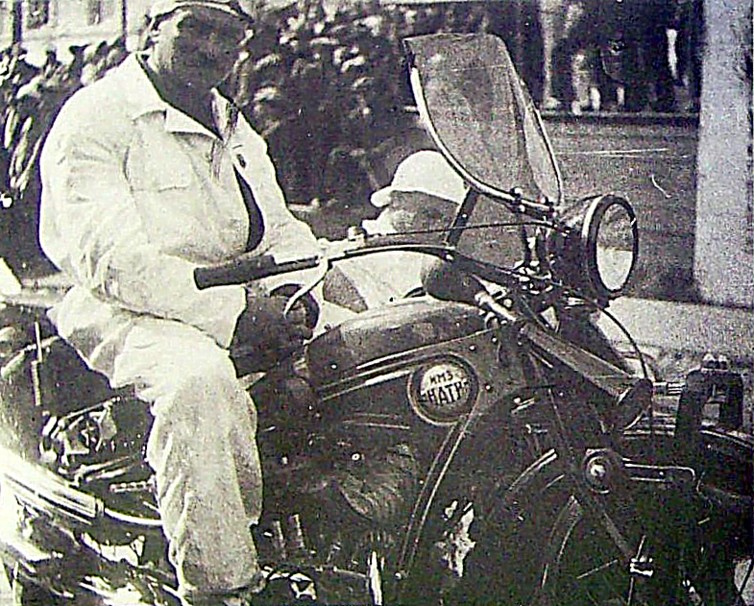
P.V. Mozharov on NATI-A-750 during trial run Moscow-Izhevsk 15 August 1933.
The planned route was changed due to the rain and mud. On the highway they reached Sarapul (60 km), from there by steamer to Gorky, then down the highway to Moscow (410 km). In the capital, a festive meeting with the Chairman of CA AVTODOR S.S. Kamenev, and members of the public town and motorcycle sections of Moscow. The new items received decent automotive reviews.
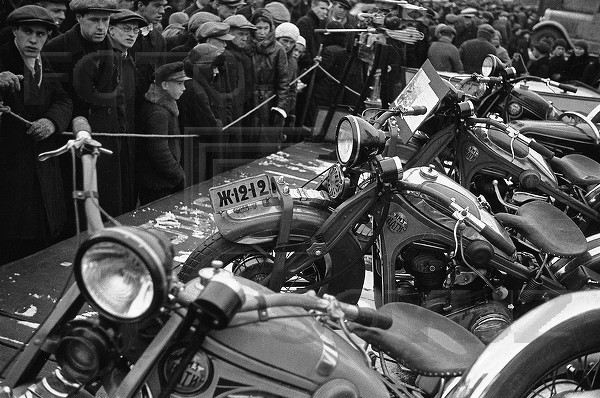
The public get acquainted with motorcycles IMZ NATI in Moscow.
After the run Mozharov moved to Moscow in September 1933, and got an apartment in the north of the capital, Likhobory. The decision was made to mass produce the NATI-A-750 at the Podolsk Mechinical Plant (PMZ) which produced sewing machines, as a branch of Singer, where high standards of precision, similar to those required for motorcycle production were available. Mozharov was charged to lead the development at PMZ. He overcame the difficulties he was faced with, PMZ lacked stamping equipment necessary for the production of chassis parts. He had a new site built, he corrected design documentation and trained the future workers.
In February 1934 the first industrial sample was completed and was given its new title, PMZ-A-750, and it was immediately sent to the Kremlin.
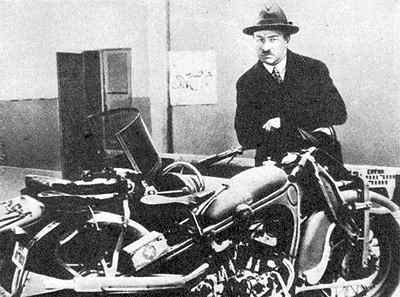
Mozharov with his new machine PMZ-A-750.
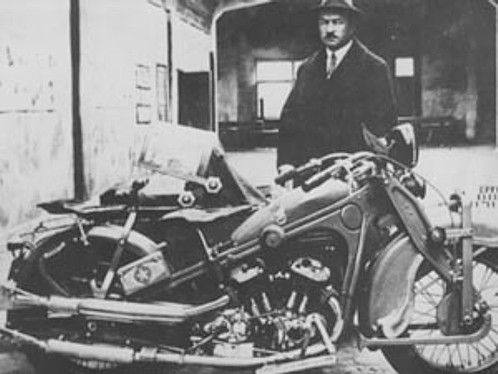
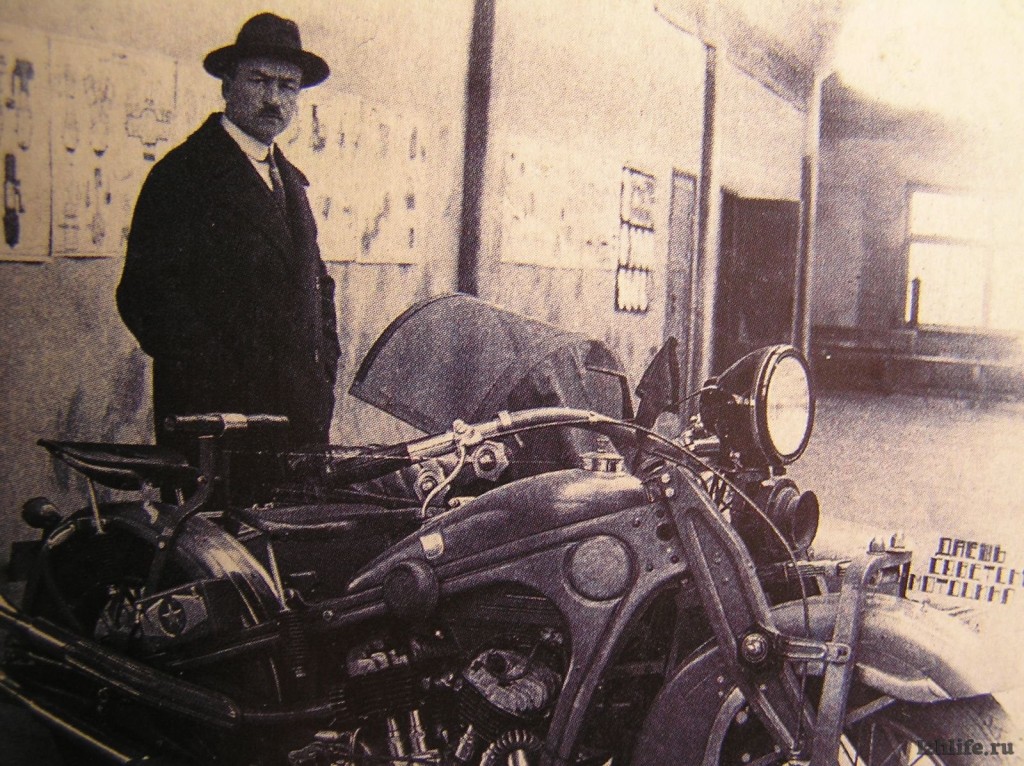

The last known photo of Mozharov, 07/01/1934, with the first builders of Izhevsk motorcycles. In leather coat, in the center and slightly to the right – Peter Vladimir Mozharov.
before we go, lets recall P.V. Mozharov’s designs
- IZh-1, with a sidecar, 2-cylinders V-twin, 4-stroke, volume-1200 cm3, the transmission-shaft, weight 300 kg, the base 1400mm
- IZh-2, with a sidecar, 2-cylinders V-twin with ventilator cooling and sidecar wheel drive, 4-stroke, volume-1200 cm3, the transmission-shaft weight 300 kg, base 1400mm
- IZh-3, with or without a sidecar, 2-cylinders V-twin ,4-stroke, 750-cm3 volume, transmission chain, weight 180 kg, base 1300mm
- IZh-4, solo 1-cylinder, 2-stroke, 200-cm3 volume, the transmission-shaft, weight 100 kg, base 1100mm (this model was chosen for mass production).
- IZh-5, solo, 1-cylinder, 4-stroke, volume 500 cm3, the transmission chain, weight 130 kg, base 1300mm
- IZh-6, solo, 1-cylinder, 4-stroke, volume 500 cm3, the transmission chain, weight 150 kg, base 1300mm
- IZh-7, solo, 1-cylinder, 2-stroke, 293-cm3 volume, transmission chain, weight 125 kg, base 1320mm
- Tremass-300, solo, 1-cylinder, 2-stroke, 293-cm3 volume, transmission chain, weight 125 kg, base 1320mm
- L-300, solo, 1-cylinder, 2-stroke, 293-cm3 volume, transmission chain, weight 125 kg, base 1320mm
- NATI-A-750, with a sidecar, 2-cylinders, v-twin,4-stroke, 750-cm3 volume, transmission shaft, weight-208 kg, base 1395mm
- NATI-B-375, solo, 1-cylinder, 4-stroke, 375-cm3 volume, transfer- chain-weight 135 kg, the base 1320mm
- NATI-B-375, solo, 1-cylinder, 4-stroke, 375-cm3 volume, transmission chain, weight 199 kg, base 1395mm

Mozharov is honoured at the IZh museum. photo © David Mayne.
Pyotr Vladimirovich Mozharov died on holidays at a health resort in Sochi on 3/11/1934, aged 46. He was buried in the Old Cemetery, Sochi.
There is said to have been suspicious circumstances (suicide? shot? pro-German? spy? victim of political repression? assassins in sanatorium corridors? … It is easy to imagine the hereditary nobleman, relatives capitalists?).
Further notes:
Mozharov knowingly chose the DKW company. After the war as a result of war reparations the DKW RT125 was produced as the USSR-Moscow M1 → Minsk 125 and K-125 Kovrovets (later in Japan-Yamaha YA1 in 1955). The DKW model NZ350 → Izh 350 in 1946 (also known as the father of model IZh-49).
Extra reading (in Russian) if you can find a copy:
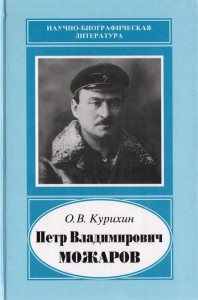
A book by journalist Oleg Vladimirovich Kurikhin was published Science in 2004, “P.V.Mozharov” printed in an edition of just 450 copies.
Another publication also:
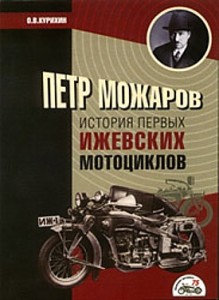
Post Mozharov times:
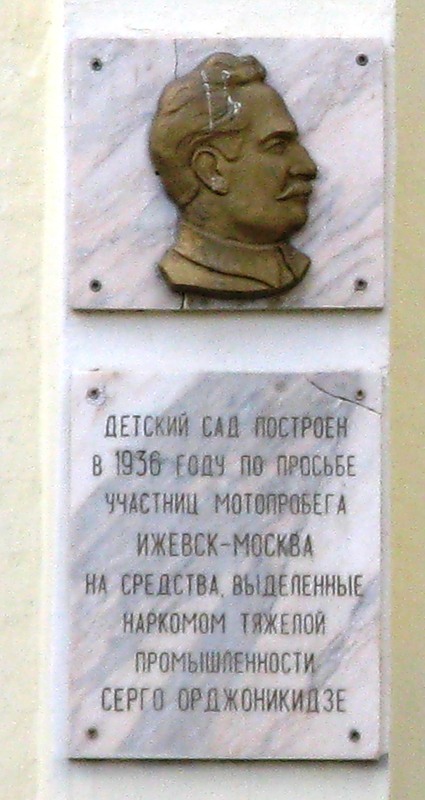
Plaque at Kindergarten Number 9, Krasnoarmeuskaya St., Izhevsk, Russia.
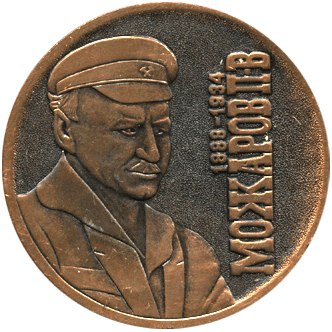
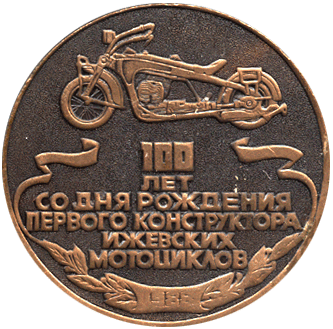
Commemorative medallion celebrating 100 years of Izhevsk Moto Plant, and P.V. Mozharov
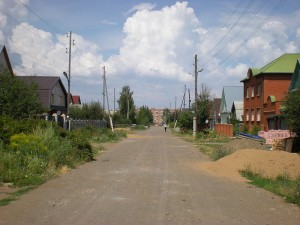
Street named P.V. Mozharov, Izhevsk. Left lane is also named after P.V. Mozharov
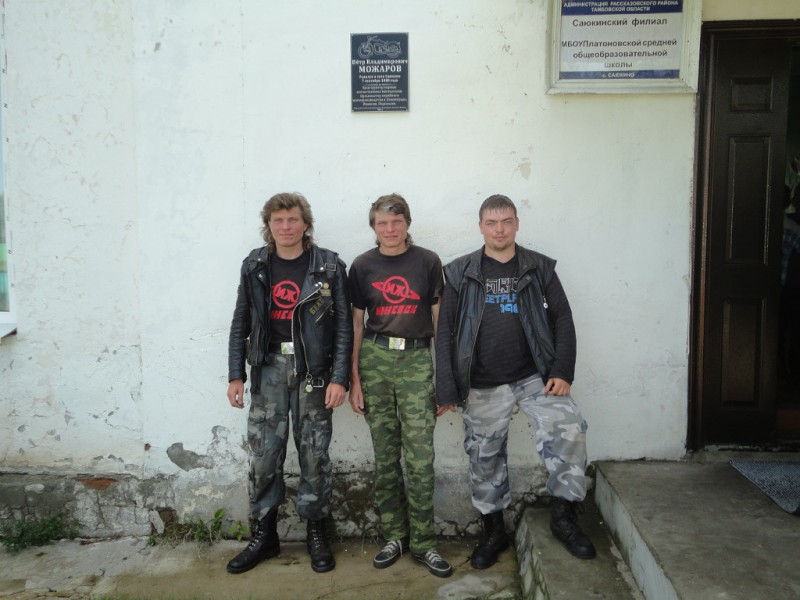
Izhevsk bikers Oleg and Igor Chupin, Kostya Tverdohleb in honor of the 125th anniversary of P.V. Mozharov and the 80th anniversary of motorcycles IZH. Sayukino, Tambov Region, Summer 2013.
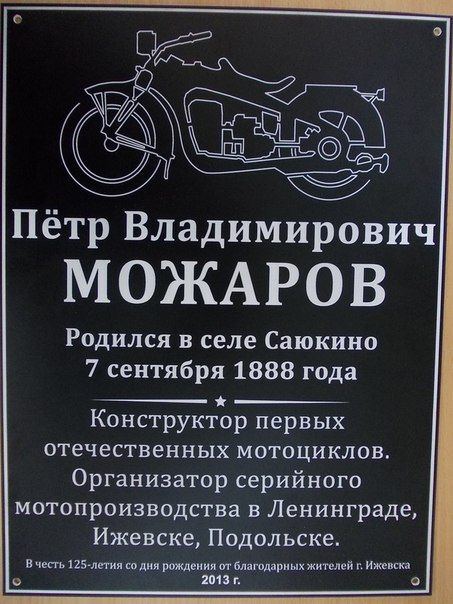
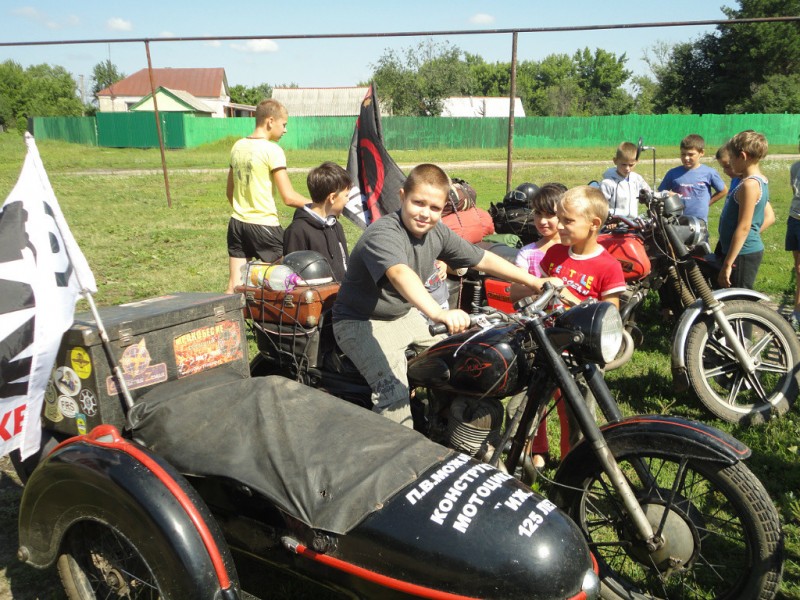
Celebration in honour of the 125th anniversary of V.P.Mozharov in his homeland, Sayukino, Tambov region, Summer 2013. on IZh-350, IZh-56 and IZh-5 Jupiter; Now for younger generations to remember and be proud of their famous countryman!
Sources: Russian Enclycopedia of Motorcycles, The Complete History of Soviet Motorcycles 1924-1945 – Part 1 by Andrei Myatiyev, Moto Moscow Russia, Izhmoto, Izhlife.ru,, DKW-Autounion, Vasteed, “Russian Dave” Mayne, Team Grim, B-Cozz archives (previous version of this page)
Today is Peter Mozharov’s birthday!
On September 7, 1888, 3 years after the creation of a motorcycle in Germany, in the Russian outback, in the village of Sayukino, Tambov province, a boy was born, whose name will go down in history. He will bring into the world ideas that will not only outlive him – they will immortalize his name.
For example, we all use the side stand of a motorcycle: it seems natural to us, life without it is already unthinkable. But it was Mozharov who invented this thing! Earth bow to the peasant, from the heart.
(It may seem that the side step is a stupid, simple thing? Well, try to abandon it on any motorcycle, at least for a week … And those who found Soviet technology remember how they cursed the uncomfortable central stand and envied foreign technology , for which the side “foot” was the norm – the irony of fate, but the domestic invention was practically not used on Soviet motorcycles)
However, this is all nonsense and trifles compared to the main, grandiose contribution of Pyotr Vladimirovich Mozharov to history: HE CREATED A RUSSIAN MOTORCYCLE. Neither more nor less.
Before him, motorcycles were not designed in Russia: do not take seriously the screwdriver assembly of pre-revolutionary mopeds “Russia” from Swiss car kits, and that device with the pathos name “Soviet Union”, which was assembled in 1925 in one copy, and which was already extremely antediluvian then a rattletrap, not far removed from the same “Russia”.
And Mozharov was an eagle.
1927: fantastic IZH-1, an incredibly progressive and advanced device, the style of which is not outdated even a hundred years later – look at our Lvpvs Alpha and Monomakh, made according to its patterns!
Surprisingly, he created or had a hand in almost the entire range of domestic pre-war motorcycles. And all of them were not custom-made, but were supposed to be mass-produced – and who better than us to understand what an abyss is between these entities.
His life was cut short absurdly and somehow senselessly. He was only 46 years old! And – this is the scale of the personality – the PMZ-750 motorcycle, with a transverse U-shaped deuce of the type of the then “X-D”, on which Mozharov worked, after it they could not be brought to mind. Drivers in their hearts read its name as “Try Me Start”. And there is no doubt that Mozharov could.
He was also a man of incredible physical strength, capable of unloading a motorcycle in a crate from a railway car onto the ground in one person. The man who got himself a tame wolf. A man to whom a leather jacket and a helmet were much more familiar than a coat and hat.
A man who brought into the world much more than this world then was able to accept.
And whose legacy we honor with honor and respect to this day:
– The first motorcyclist of the city of Izhevsk
– The Izhevsk plant was initially asked to organize the production of bicycles, and the production of motorcycles was the initiative of Petr Mozharov
– I traveled about 70 thousand kilometers in my life (a significant part – off-road ), tried about 25 brands of motorcycles
– The BMW R16 motorcycle contains 18 design changes made by Mozharov during a visit to the BMW factory
– As a thank you, BMW gave Mozharov (officially: sent for testing) two R16 motorcycles, on the emblems of which the BMW letters were replaced with MPW (Mozharov PW)
– When Mozharov left for a test run of the L-300, he brought his BMW R16 into the apartment
– The motorcycle sidecar modified by Mozharov was produced at German factories from 1931 to 1945, and at USSR factories from 1941 to 1971, more than 8 were produced in the USSR alone million of these strollers
– Mozharov designed 10 different models of motorcycles (5 of them in just one year), organized serial motorcycle production at 3 factories, personally tested them on runs
– He restored an airplane, a boat, various cars, built a glider and a snowmobile, designed and assembled 2 types of stationary engines, an efficient factory siren, re-equipped the thermal facilities of the factories of Tambov and Izhevsk, received many certificates and patents, made a project for a motorcycle factory, and so on
– On a motorcycle Mozharov participated in races both outside the USSR and inside: he was in the western, central, southern and Volga parts of the RSFSR, the Ukrainian SSR (Donbass, Kiev, Kharkov), the Georgian SSR – therefore he perfectly understood the road conditions that a Russian motorcycle must meet.
Many thanks for the materials to the public, mozharovmoto , the keepers of the memory of the great designer.
Contributor: Steve Wiggins especially for b-cozz.com
